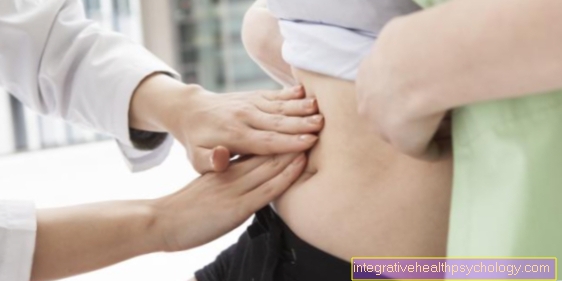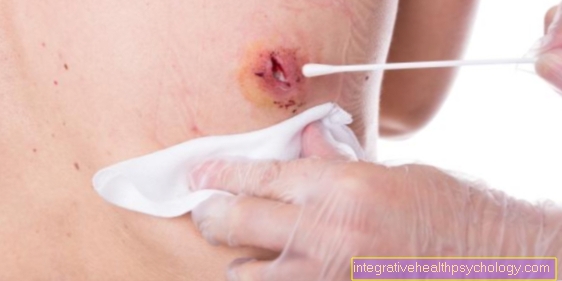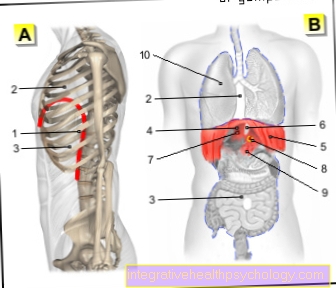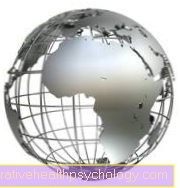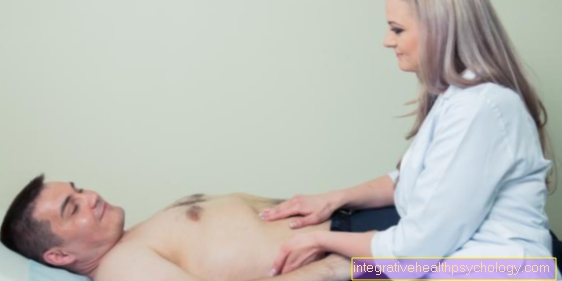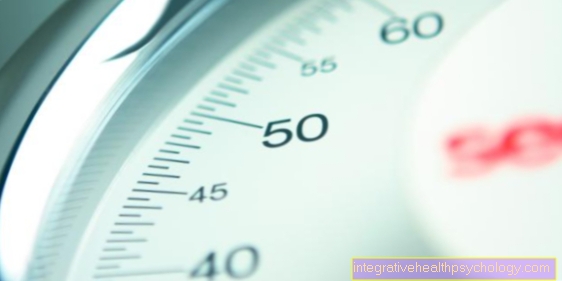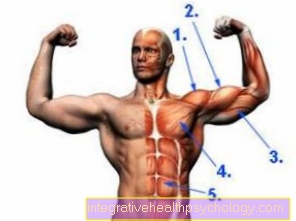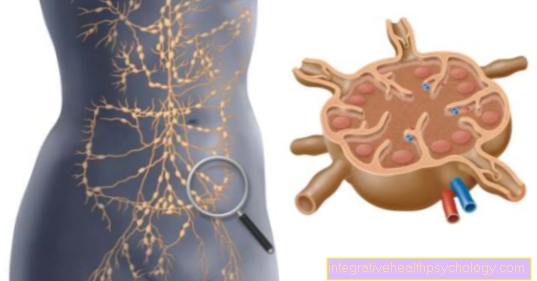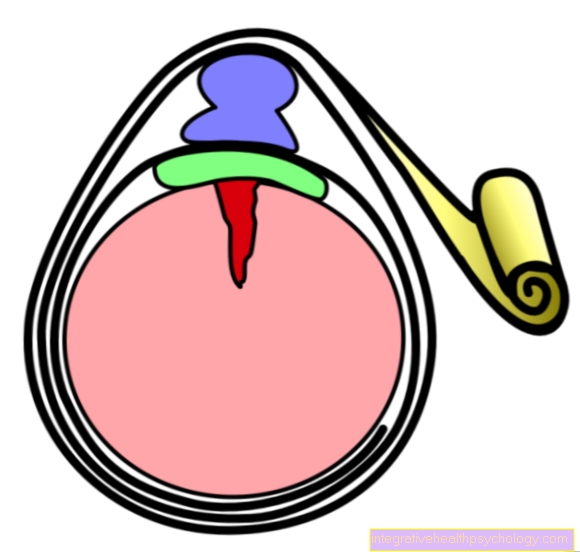Therapy for circulatory disorders
Synonyms in a broader sense
Perfusion disorder
English: circulatory disorder, impaired circulation, circulation disturbance, disturbance of (the) blood supply
This is how circulatory disorders are treated
When treating circulatory disorders, a decision has to be made between acute initial measures and long-term therapy.
If there is an acute vascular occlusion, quick action is required: As soon as there is a suspicion, a doctor should be called, as a medical emergency is then present. If an extremity is affected, it is best to padded and stored it deep to promote blood circulation. Further treatment is best carried out in a clinic, where both non-drug procedures (e.g. a bypass operation after a heart attack) and various medications such as Naftidrofuryl are available. Pain relieving and blood thinning drugs, such as heparin, also play an important role here. If the general condition of the patient is correspondingly poor, he is also supplied with oxygen and fluids through an infusion.
Would you like to read more about therapy for circulatory disorders? This article might also interest you: Which doctor treats a circulatory disorder?

These drugs can help
In the treatment of circulatory disorders, modern medicine nowadays has a large number of drugs at its disposal, which pursue different approaches in order to remedy or at least improve the circulatory disorder.
On the one hand, there are drugs that influence the flow properties of the blood (anticoagulants). Colloquially, one speaks of making the blood “thinner”. Well-known representatives from this group of drugs are, for example, ASS100, Clexane or Marcumar. What they all have in common is that they delay blood clotting and thus prevent blood clots from forming.
Other drugs ensure better blood vessel patency. They increase the diameter of the blood vessels so that the blood has more room to flow.
A well-known representative of this group is, for example, the “nitro spray”, which many patients with circulatory disorders of the heart are prescribed.
A last known group of drugs deals only indirectly with circulatory disorders. They are primarily directed against the accumulation of cholesterol in the blood vessels, i.e. against artherosclerosis. Representatives of this group, such as simvastatin, reduce the cholesterol absorption from food and thus also the cholesterol deposition in the blood vessels, which in turn results in a larger vessel diameter that is available to the blood.
Are you more interested in this topic? Read our next article at: Medicines for circulatory disorders
Surgery in the treatment of circulatory disorders
Surgical methods in the treatment of circulatory disorders depend on the severity of the circulatory disorder and also whether it is an acute blood vessel blockage or a permanent reduced blood flow.
A more or less surgical procedure is a so-called heart catheter examination. The coronary vessels are shown with the help of an X-ray procedure and recognizable constrictions can be expanded with the help of so-called stents, so that the blood flow to the heart is ensured again.
If it is a question of permanent reduced blood flow, a bypass is usually the method of choice - regardless of the body region.Doctors create a bypass for the bloodstream to bridge the blocked or severely narrowed area.
Finally, and in very rare cases, so-called thromboses can be surgically removed from blood vessels. Thromboses are blood clots that form in the vessel and cause an abrupt closure.
If you are more interested in surgical methods in the treatment of circulatory disorders, read our next article below : Stent, bypass
These home remedies can help
In the field of home remedies, there are also a variety of herbs or heat applications through to acupuncture applications, which are said to improve circulatory disorders.
The application of heat all causes the body's blood vessels to widen. This can be achieved, for example, by warm foot baths. Warmed up grain pillows or hot water bottles can be another way to increase blood flow in certain areas.
Cold treatments such as the so-called Kneipp cure also ensure better blood circulation in the submerged body regions due to the reflective heating that sets in after the cold.
On the herb side, for example, marigold blossoms or woodruff can be found, which can be infused as tea. Rosemary oil can be used to rub certain parts of the body and, last but not least, garlic is said to have an almost vascular rejuvenating effect. It should cause the vessels to widen and reduce the "stiffness" of the vessel walls.
Read more on the subject at: Home remedies for circulatory disorders
Ginko / Tebonin®
Tebonin® is the trade name of a drug based on ginko leaf extract. In addition, there are also numerous other preparations based on ginko, almost all of which have the term “ginko” in their name. The mode of action of such preparations can be compared with those of blood thinners such as ASS100 or Marcumar, as they also affect blood clotting; make the blood more or less thinner. This enables the blood to better pass through constrictions and the risk of blood clots forming, so-called thromboses, is reduced.
In addition, the ginko extract is said to increase the ability to think. However, the blood-thinning effect only occurs if the product is taken for several weeks. Compared to other drugs that have a blood-thinning effect, there are no antidotes available for the ginko extract. In the event of an injury with profuse bleeding, this can become a problem, as the bleeding is more severe than normal and this situation can only be brought under control within days. It is true that there are means to thicken the blood again in an emergency, but not every ambulance is equipped with these means.
Find out more about the topic: Tebonin®
Nutrition for circulatory disorders
Especially in the modern western world, diet is a direct and indirect risk factor for the occurrence of circulatory disorders. The main keyword in this context is so-called cholesterol or blood lipids.
The body needs a certain amount of fats, which should be supplied to it, because cholesterol is the basis for many of the body's own hormones and also for vitamin D.
However, excessive consumption of fatty foods results in too much cholesterol building up in the blood, where it begins to build up on the walls of blood vessels. Ultimately, this can lead to the diameter of the blood vessels shrinking to a fraction of their origin or these cholesterol deposits to loosen and cause a total occlusion of the blood vessel at a narrower point in the course.
Therapy with the help of nutrition means in most cases avoiding fatty meals and increasing the use of unsaturated fatty acids, such as those found in nuts, avocados or kernels. These things should not be consumed in addition, but used as a substitute for the otherwise consumed saturated fatty acids.
A diet high in cholesterol can be a risk factor for circulatory disorders. For more information, see: Food and Cholesterol
Exercise if you have a circulatory disorder
A preventive effect is ascribed to sport, especially with regard to atherosclerosis. It is intended to prevent severe vascular occlusions or narrowing. In addition, sport can also play a major role in the treatment of circulatory disorders. In the case of periarterial occlusive disease (PAOD for short) in particular, studies have shown that intensive walking training can double the pain-free walking distance.
Exercise causes a kind of remodeling of the vascular walls through the stimulated blood flow, they become increasingly elastic again and lose a certain part of the stiffness caused by atherosclerosis. With the help of sport, however, the original condition cannot be completely restored. In this regard, sport as a preventive measure has a much greater effect than a treatment option. In addition, exercise is usually accompanied by a lower body weight. This is considered to be the greatest risk factor for high blood pressure in medicine. High blood pressure, on the other hand, is one of the greatest risk factors for the development of vascular diseases.
You might also be interested in this topic: Treatment of atherosclerosis


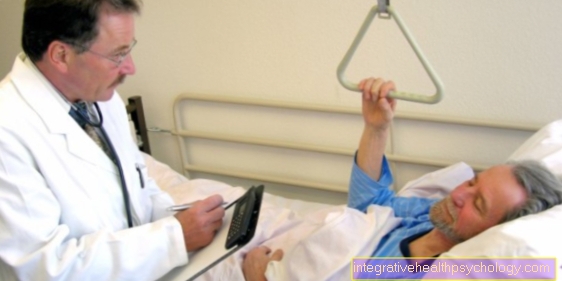
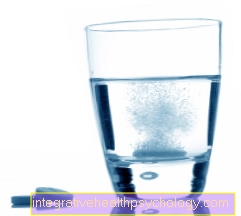

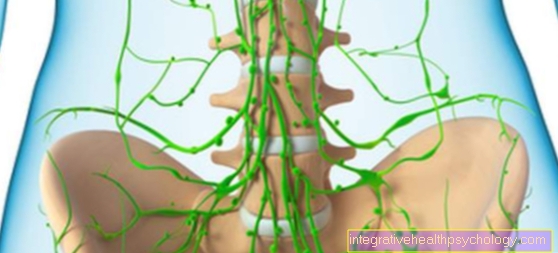

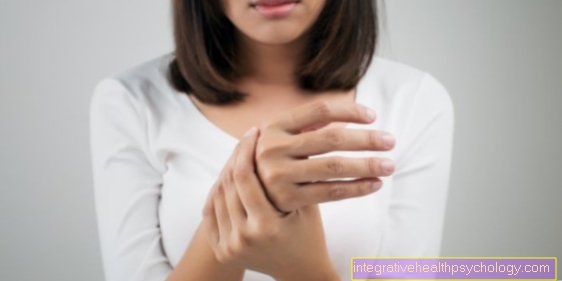
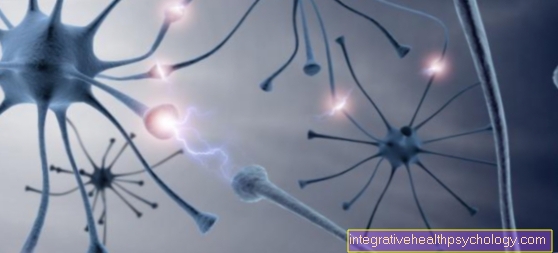
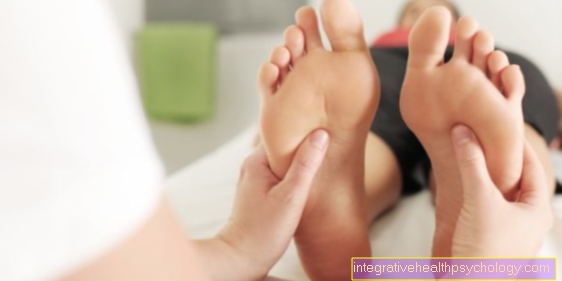
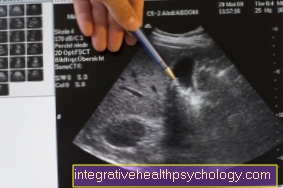
.jpg)

